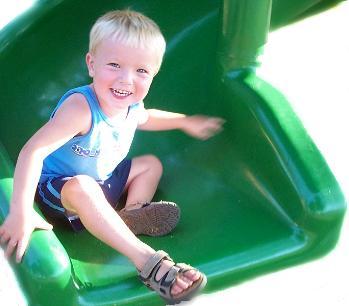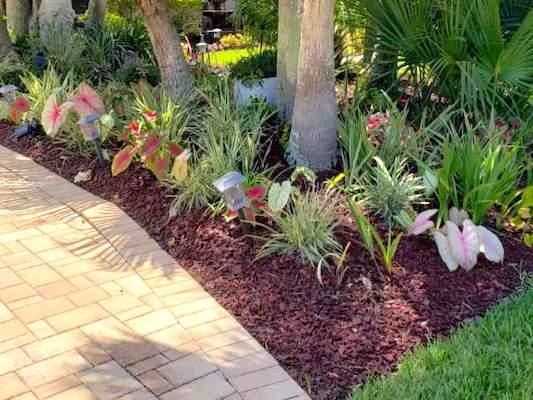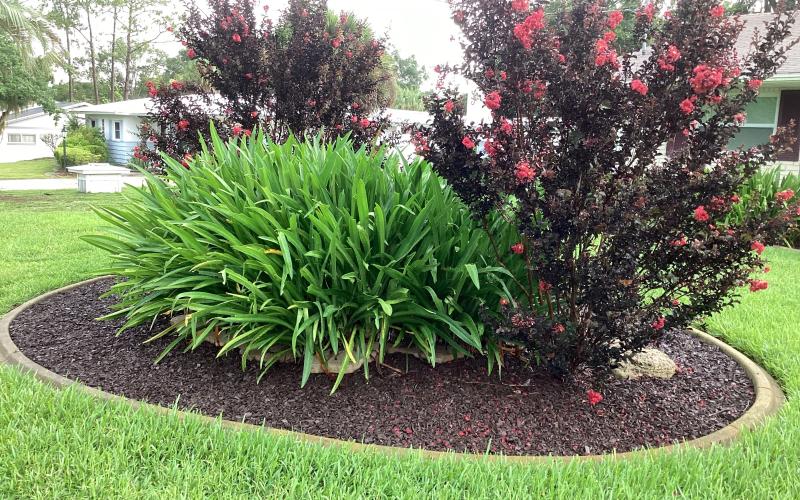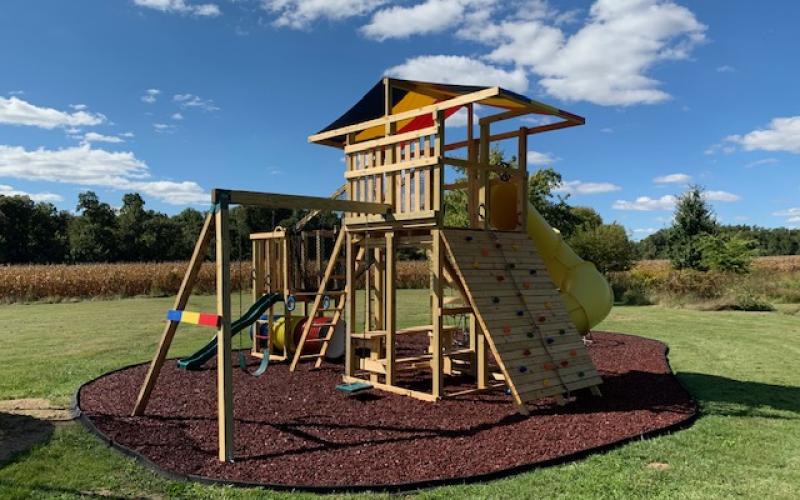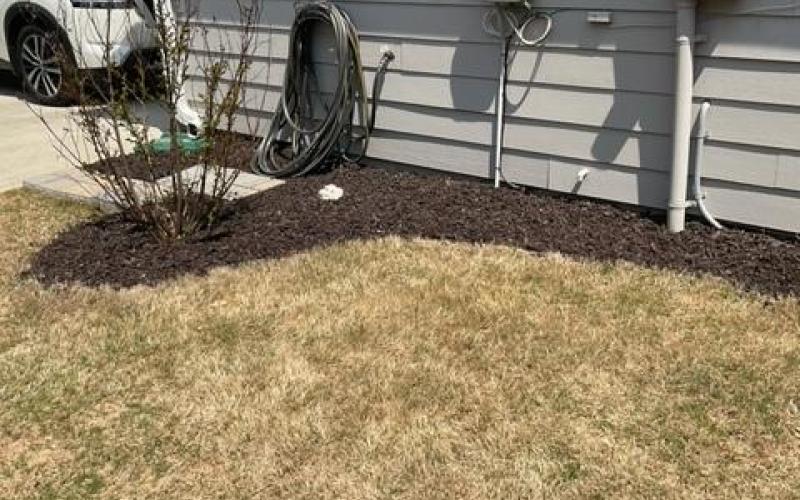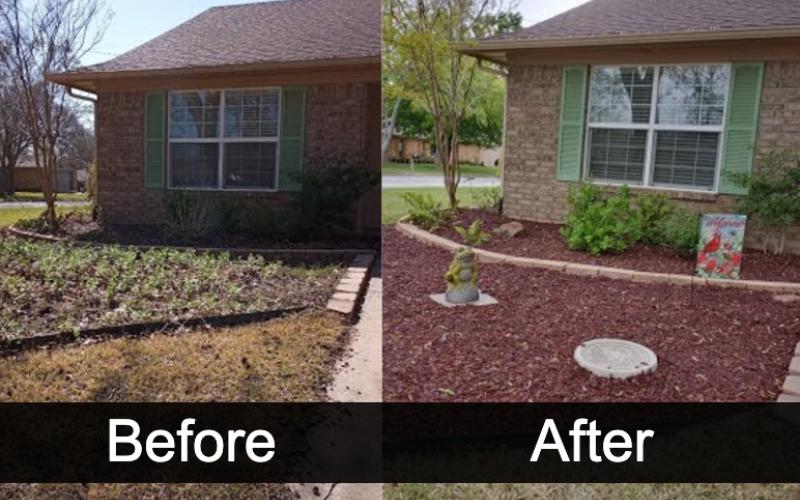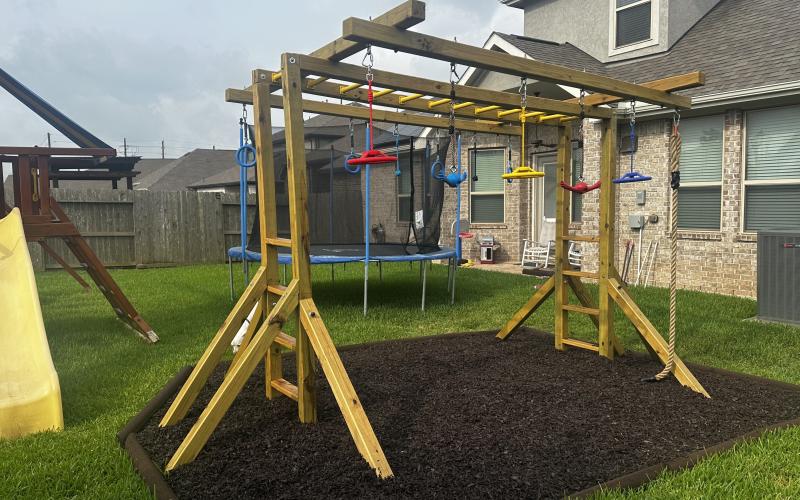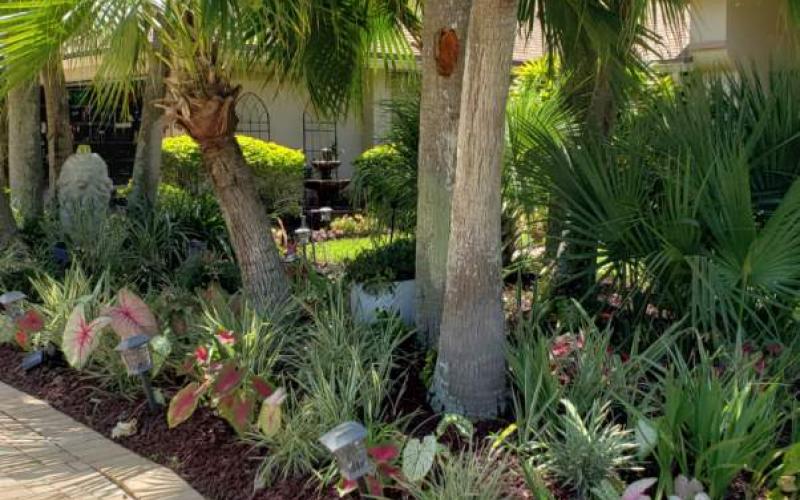Installing Rubber Mulch is easy and suitable for either a homeowner or professional. Below you can find recommendations for long-lasting, safe installations. Contact us if you have any questions.
Contents:
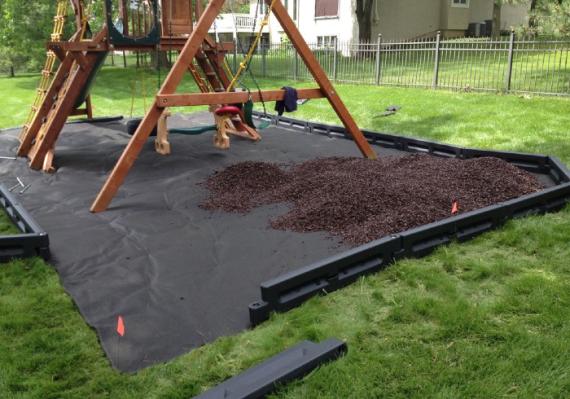
SITE PREPARATION
Site Analysis
Prior to design of the playground, a certified engineer or landscape architect knowledgeable of area climate and topography should be consulted. The consultant must be familiar with updated versions of applicable ASTM standards, CPSC’s Handbook for Public Playground Safety, and state and local codes.
Base Preparation
Intended installation area must be cleared of rocks, stumps and other debris, including wood mulch or other surface material. Pre-existing surface material impedes the safety performance of rubber mulch. It is not recommended to install rubber mulch over asphalt or concrete, as these surfaces severely compromise rubber mulch’s safety performance. Chemicals in asphalt also break down the coloring agent on colored rubber mulch.
If you are replacing wood mulch with rubber mulch to upgrade your playground, remove the wood mulch. If you leave the wood mulch it will decompose underneath and can turn in to a messy sawdust like material. It can also retain water and cause moisture related issues.
For residential playgrounds it is recommended to eliminate or remove the grass below but it isn't absolutely required. Removing the grass will help ensure even application of the rubber mulch and mitigation of weeds and grass growing up through the rubber mulch. Removal of the grass will also enable you to tamp down the earth below the rubber mulch to ensure a compact surface. For residential playgrounds you can put a sub-base of sand and compact it but it isn't required. Commercial playgrounds may want to consider sub-bases of compacted sand or gravel beneath the landscape fabric.
For in-ground installation, the area should be excavated to a minimum depth of 6”. If you require in ground installation, ensure that the area will have drainage installed to move water out of the recessed area.
Grade
Your play area should be properly graded for drainage. A proper drainage system should be in place as water tends to move towards the lowest point. Proper grading is important so that water doesn't pool in any area of the playground and so that it will properly exit the area.
Retaining Borders
Above-ground installation of rubber mulch requires borders to retain the rubber mulch and provide a finished, polished look. Rubber borders effectively contain the rubber mulch, preventing excessive kick-out of material, thereby minimizing the need for replacement material in the future. Our borders, available in multiple heights and materials, are strongly recommended for rubber mulch retention. The height of the border depends on the depth of your rubber mulch. The border should be at least 1 to 2 inches above the rubber mulch. Shop our borders.
Filter Fabric
A quality landscape fabric is recommended to be installed under the rubber mulch to mitigate weed growth, maintain separation of rubber mulch and soil, and reduce sinking of the rubber mulch. Fabric must be cut to fit tightly around all playground structures. You will want to overlap the fabric at the seams by approximately 4 to 6 inches. It is recommended to tape the seams in order to prevent separation during installation and to prevent dirt or debris from mixing with the mulch. Likewise you can use landscape fabric pins to help hold down the fabric during installation. Filter fabrics are available in a variety of types, sizes and thicknesses and not all are created equally. We recommend a 3oz non-woven spunbond fabric because it provides great strength, durability, and water permeability. We also recommend the black, not grey, fabric which provides extra UV stabilization for longevity. We sell this exact specification in a US made premium version which is perfect for rubber mulch applications. Shop our filter fabric.
Drainage System
Rubber mulch doesn't absorb water and water will travel right to the bottom of the rubber mulch ground cover which is why proper drainage is important. Excessive pooling of water can impair rubber mulch safety performance and any pooling of water can create issues regardless of the ground cover used. To prevent pooling, your ground should be properly graded and if needed a drainage system can be implemented to help evacuate water if the grading alone or the sub-base doesn't provide adequate drainage. There are many manufactured drainage systems on the market which can be installed underneath the rubber mulch. We suggest using a landscape fabric over drainage stone, sand, and regular earth and that it is permeable. The landscape fabric referenced above is permeable and perfect for this application.
Image
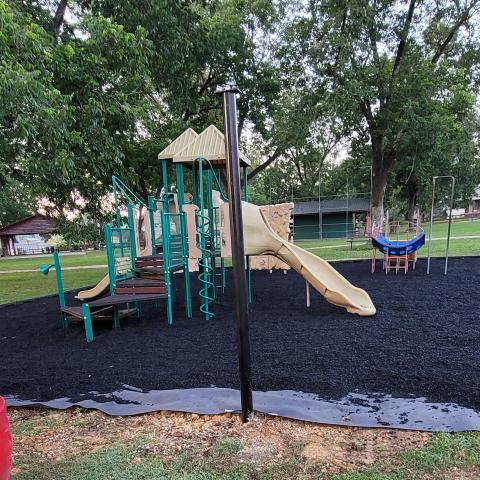
| Image
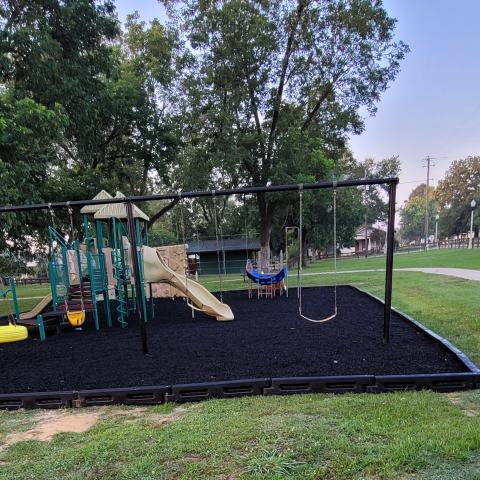
|
INSTALLATION
Delivery
Rubber Mulch can be delivered in smallsacks, supersacks, or in bulk. If space is adequate, a dump truck/trailer may unload the material directly into the play area. Smallsacks or Supersacks may be transferred to the play area by bobcat or wheelbarrow.
Tools & Application
Rubber mulch may be spread on play area manually, with rake or shovel, or by machine for larger playgrounds. Installer must exercise care not to disturb the geo-textile filter fabric while spreading. A final hand-raking provides a smooth finished playground surface. Hose down the newly spread mulch prior to first use. For larger applications you may need to hose, rake and repeat to ensure any extra material resulting from the manufacturing process is removed.
Rubber Wear Mats
Our rubber mats or equal are strongly recommended to be installed in high traffic areas, such as beneath swings and sliding poles, and at slide exits. The rubber mats are to be laid midway through the rubber mulch, as they minimize displacement of rubber mulch. These mats may be used with any loose fill surfacing product. Rubber wear mats should not be used alone. The maximum critical fall height for each mat is 3 feet. They should only be used in conjunction with rubber mulch on playgrounds.

MAINTENANCE
Benchmark
Immediately following installation and inspection, the level of rubber mulch should be marked off on the playground equipment, using a permanent marker or the like. Especially in high traffic areas, rubber mulch requires periodic raking to restore the material to its safe and proper depth.
Aesthetic Care
Rubber mulch may be cleared of foreign objects and debris using rake or leaf blower.
